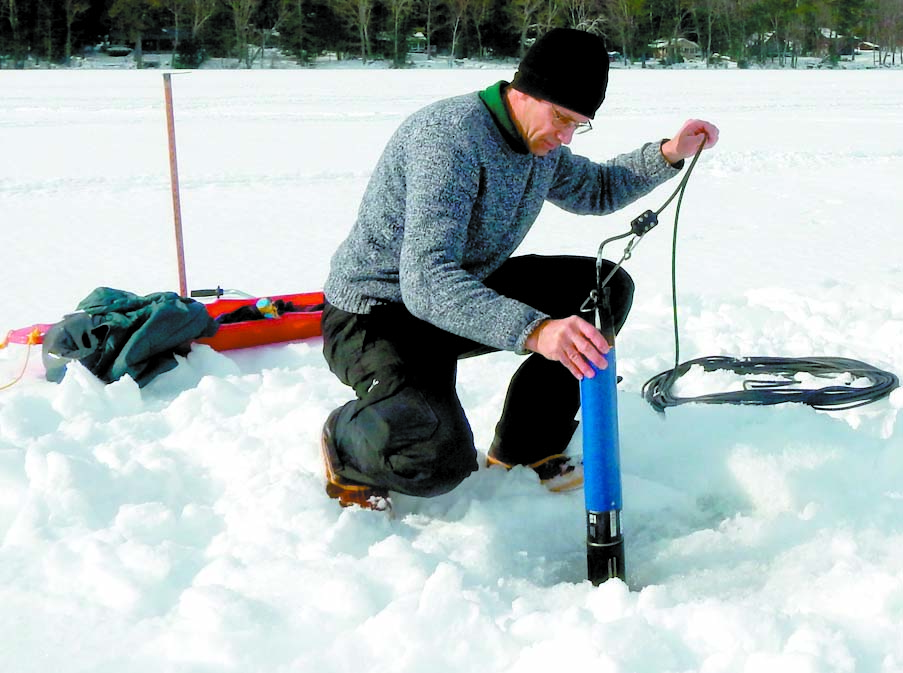Algae, not just a summer visitor

By Ben Peierls
LEA Research Director
It may look quiet on an ice-covered lake, but there can be a world of life underneath the frozen surface.
Last winter, Lakes Environmental Association staff found an extraordinary display of lake biology in these frigid waters. Hovering just below the two feet of ice and one foot of snow on Keoka Lake, an algae bloom made the lake water look like diluted pea soup.
This find was part of an expanded effort by LEA to assess lake conditions during winter time. Over the course of two and half months, LEA staff visited six different local lakes, three times each. Included were Highland Lake, Island Pond, Sand Pond, Stearns Pond and Trickey Pond, in addition to Keoka. Our goal was to build an understanding of lake physical and biological conditions under the ice, how those conditions change throughout the season, and eventually whether there is a connection with summertime water quality.
We had previously noticed more algae just below the ice on several lakes, but the March Keoka trip was exceptional. Our sensor that measures chlorophyll, a pigment found in all plants and algae, revealed under-ice readings of about 10 times the late January readings and almost 20 times typical summer values. Deeper than about three feet, however, the water was basically clear.
LEA staff identified the bloom as a kind of golden-brown algae, not uncommon in local lakes, though not usually seen at these densities. The algae forms colonies made of dozens of individual cells and are known to collect under the ice where light is optimal in late winter or early spring. These organisms can sometimes cause odor and taste problems in drinking water, but in this case, the bloom was gone by ice-out.
Although the ice is thinner, so far this winter, we are back at it again hoping to expand our understanding of lake conditions year-round. If you would like to learn more about what is going on under the ice, I encourage you to come to the Maine Lake Science Center this Thursday, Feb. 6, from 5 to 6 p.m. where I will give an overview of LEA’s winter monitoring program (we will postpone if the weather is bad). In addition, you are welcome to join me and our staff researcher, Maggie Welch, as we head out to a local lake on Friday morning (again, weather permitting) with an ice auger to get some current readings. After all, we can’t let the ice fishermen have all the fun!


